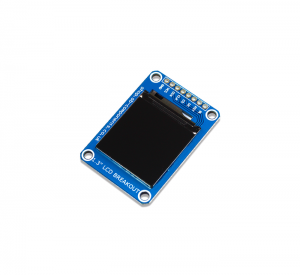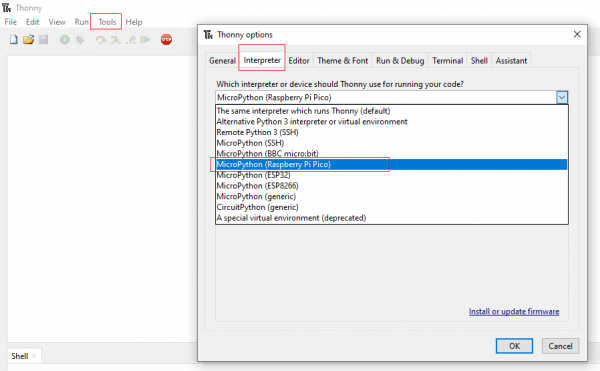Difference between revisions of "1.3''-LCD-Breakout"
From SB-Components Wiki
| Line 25: | Line 25: | ||
== Installation == | == Installation == | ||
| − | + | 1.3inch LCD breakout Module for microcontrollers eg: Raspberry Pi, Arduino, and raspberry pi pico, etc. it has, 65K Colors, 240×240, supports SPI protocol | |
In this folder, you see two python files and one firmware.uf2 file | In this folder, you see two python files and one firmware.uf2 file | ||
Revision as of 12:51, 17 January 2022
1.3inch LCD Breakout
1.3” LCD breakout is a 1.3-inch diagonal display with 240 x 240 resolution, 65K RGB colors, clear and colorful displaying effect, Four Push buttons, and a joystick. The 1.3" LCD breakout includes an integrated ST7789VM display driver and SPI interface, reducing the number of IO pins required.
Features
- 1.3inch diagonal, 240x240 resolution, with embedded controller, communicating via SPI interface.
- SPI interface, requires minimum GPIO for controlling.
- Comes with development resources and manual (examples for Raspberry Pi/Jetson Nano/ Arduino/STM32).
Specifications
- Operating Voltage - 3.3 V
- Pixels - 240x240 resolution
- Pixel Size - 0.0975 (H) x 0.0975 (V) mm
- Display Driver - ST7789VM
- Display Color - 65K RGB

Buy it From : Click Here
Installation
1.3inch LCD breakout Module for microcontrollers eg: Raspberry Pi, Arduino, and raspberry pi pico, etc. it has, 65K Colors, 240×240, supports SPI protocol
In this folder, you see two python files and one firmware.uf2 file
- st7789.py -> this file contain the library of the LCD module, save the file in the raspberry pi pico
- main.py -> this file contain the main code, you need to run this file, you also need to save this file to Pico
- firmware.uf2 -> by pressing bootsel of the pico and hold then connect to the laptop after this a new storage device comes, name "RPI-RP2", then drag and drop this file to pico
For setup the Board in thonny
- Stack Raspberry Pi Pico on the female header of Pico Sense HAT.
- Connect USB cable on Raspberry Pi Pico USB port.
- Choose interpreter as MicroPython (Raspberry Pi Pico).
Resources
Github

